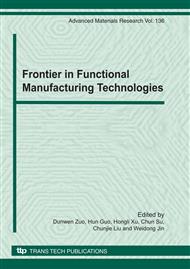p.279
p.284
p.289
p.293
p.298
p.303
p.307
p.312
p.316
Study of Traction Properties of Three Space Lubricants Used for Rolling Bearing
Abstract:
Based on Johnson and Tevaarwerk’s model, traction coefficient was obtained for operating conditions representative of spacecraft applications. In this model input data come directly from rheological experiments or are derived from other measurements through physical relationships. Theoretical results were also compared with experimental ones which were measured for the same operating conditions.
Info:
Periodical:
Pages:
316-320
Citation:
Online since:
October 2010
Authors:
Price:
Сopyright:
© 2010 Trans Tech Publications Ltd. All Rights Reserved
Share:
Citation:


